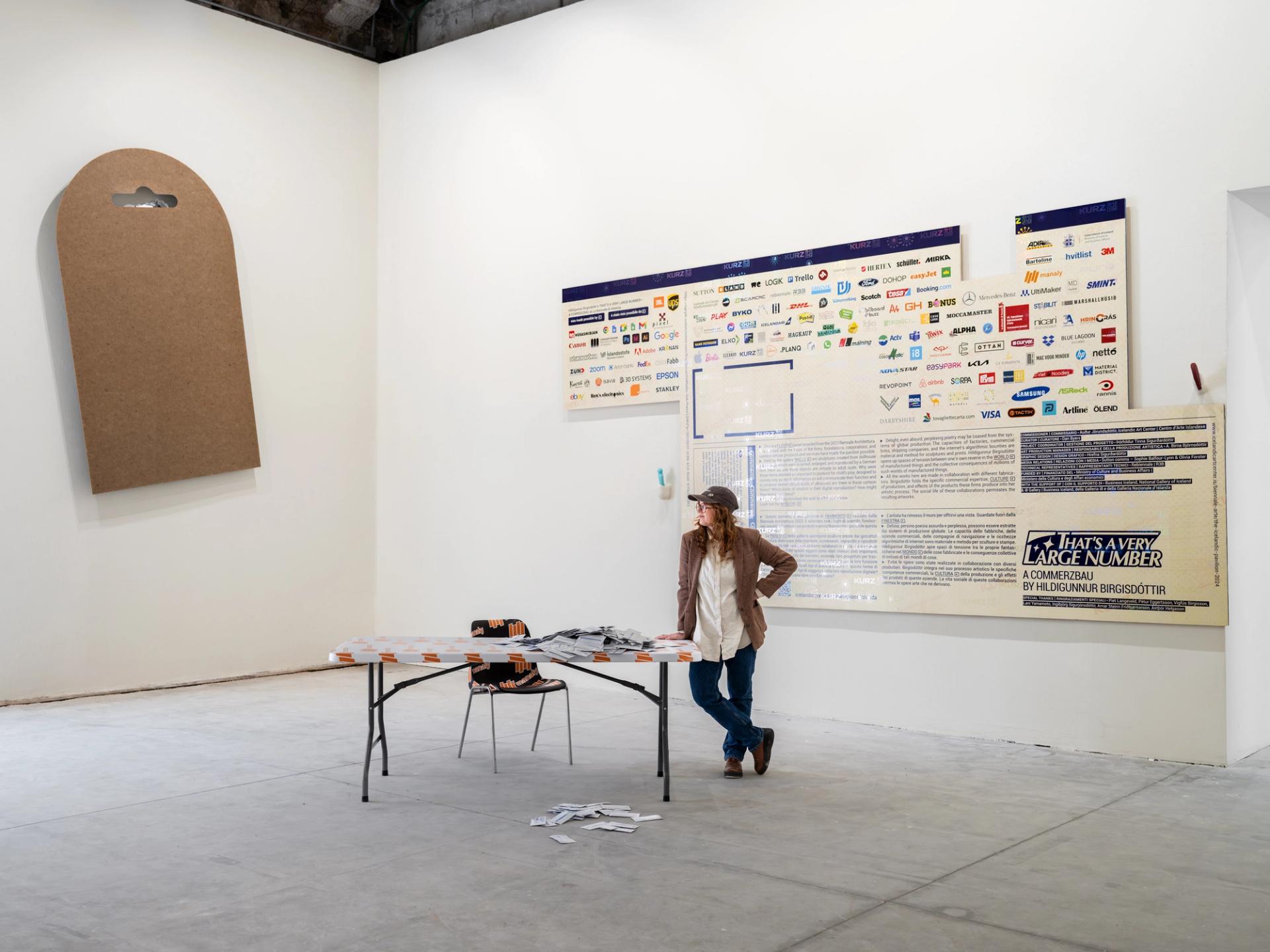Italy
Massimo Bartolini
Italy has the biggest pavilion in the Arsenale but how do you make the most of it? This year Massimo Bartolini fills up the over-generous space with sound—well, sound and lots of scaffolding.
The scaffolding forms an industrial version of a garden maze. At its centre, the water in the pool is agitated by a wave, the heartbeat of an organic blob. Handmade rectangular organ pipes, laid on their sides like coffins, play a new piece of music (by Caterina Barbieri and Kali Malone), which evokes both the peace and the terror of religious music. In the garden outside, a haunting piece by the British composer Gavin Bryars emanates from hidden speakers.
There isn’t much to see in the Italian pavilion—but after a synapse-dazzling day in the Arsenale, this comes as a relief. This is a rare space in the Biennale for rest, contemplation and introspection.
Malta
I Will Follow the Ship, Matthew Attard
Matthew Attard’s Stone wall study in his show I Will Follow The Ship © Matthew Attard and Galleria Michela Rizzo
There is a dearth of digital art at this year’s Venice Biennale, so Malta’s pavilion offers a refreshing segue into the world of technology. Using eye trackers, the artist Matthew Attard retraced ship graffiti that was etched over centuries onto the walls of wayside chapels across Malta. The moving results, projected onto a replica stone surface in the pavilion, draw a line between these historical drawings imbued with religious belief and our blind faith in technology.
Lebanon
A Dance with her Myth, Mounira Al Solh

Mounira Al Solh’s A Dance with her Myth (2023) Image: courtesy of the artist; Galerie Sfeir-Semler Beyrouth/ Hamburg © LVAA
Overturning dominant Western narratives is a major theme at this year’s Biennale—and Mounira Al Solh does just that in her presentation for the Lebanese pavilion. Al Solh’s reinterpretation of the ancient Greek myth of Europa being abducted by Zeus in the form of a bull, seeks less to admonish and preach, but rather to redress the gender imbalance of this story through humour and playfulness. The brightly coloured collages, drawings and films even include a depiction of Europa tossing Zeus’s head around like a football. The show is green too: the boat at the centre of the show is made from reclaimed wood rather than Lebanese cedar—traditionally used by Phoenician shipbuilders—which is under threat from climate change.
Senegal
Bokk—Bounds, Alioune Diagne

Alioune Diagnes’s Bokk—Bounds © The Art Newspaper
Hazy images of joy and despair make up Senegal’s showstopper of a Biennale debut. A monumental jigsaw of a wall work, formed out of 17 different panels, presents a variety of contrasting scenes: migrants travelling across the Mediterranean, orange lifejackets wrapped around their bodies; a person curled up on a street; teenagers laughing together. Get up close and it becomes clear that these shapes are formed out of minute, gorgeous calligraphic marks, perhaps inspired by the artist’s grandfather, who was a Koranic master. A real-life canoe lies in front of the wall work, broken in half. Rarely has an installation spoken so effectively to the power of connection and the dangers of drifting apart.
Iceland
That’s A Very Large Number—A Commerzbau, Hildigunnur Birgisdóttir

Hildigunnur Birgisdottir’s That’s A Very Large Number—A Commerzbau Photo: © Ugo Carmeni
In Hildigunnur Birgisdóttir’s installation visitors might not even realise they are in the Icelandic pavilion. The introductory wall label is folded into an artwork to look like packaging. It is made from a piece of flooring recycled from last year’s Architecture Biennale and features the pavilion’s floorplan alongside a sea of branding.
Usually, only two or three sponsors get such a coveted spot, but Birgisdóttir’s has listed the logos of every company that made the project possible, including delivery services (Fedex, UPS), airlines (Easyjet, Icelandair), computer software (Trello, Adobe, Google), stationary (Scotch, Post-It), communication apps (Zoom, Microsoft Teams), the PR company (Sutton), even the snacks she ate (Twix) and cigarettes she smokes (Camel).
The pavilion is full of subtleties: the space is painted in the off-white colour of old electrical sockets, objects buzz like mobile phones, the table and chairs are covered in the hire company’s logo and visitors are given a peek of 7% of a digital advertising billboard in Reykjavik. If nothing else, the pavilion is worth a visit for the free—branded—wet wipes, that will be restocked each day to keep you fresh throughout the Biennale.




